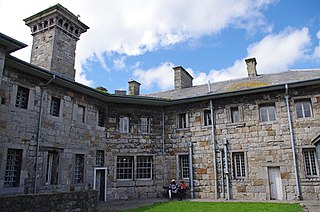 W
WBeaumaris Gaol is a disused gaol located in Beaumaris, Anglesey, Wales. Although no longer in use it remains largely unaltered and is now a museum open to visitors, with around 30,000 visiting each year.
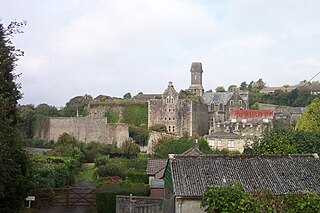 W
WBodmin Jail is an historic former prison situated in Bodmin, on the edge of Bodmin Moor in Cornwall. Built in 1779 and closed in 1927, the large range of buildings is fell into ruin, but parts of the prison have been turned into a tourist attraction, and more recently another large part was converted into a hotel.
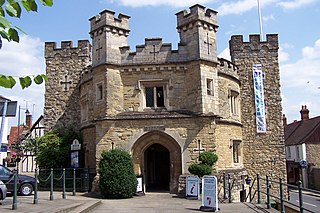 W
WBuckingham Old Gaol, sometimes known as Lord Cobham’s Castle, is an historic building in Buckingham, the former county town of Buckinghamshire, England.
 W
WThe Castle of St John is an early 16th-century L-plan tower house in the centre of Stranraer, in Dumfries and Galloway, southwest Scotland. It was built by the Adairs of Kilhilt c.1510. It has been used as a home, a court, a police station and as a military garrison during the "Killing Times" of Covenanter persecution in the 1680s. During the Victorian era, the castle was modified to serve as a prison, and it was used as an ARP base during the Second World War. The castle was refurbished in the late 1980s and is now a museum.
 W
WThe Clink was a prison in Southwark, England, which operated from the 12th century until 1780. The prison served the Liberty of the Clink, a local manor area owned by the Bishop of Winchester rather than by the reigning monarch. As the Liberty owner, the Bishop kept all revenues from the Clink Liberty, and could put people in prison for failing to make their payments. As the Bishop, he could also imprison heretics. The Clink prison was situated next to the Bishop's London-area residence of Winchester Palace. The Clink was possibly the oldest men's prison and probably the oldest women's prison in England.
 W
WHMP Belfast, also known as Crumlin Road Gaol, is a former prison situated on the Crumlin Road in north Belfast, Northern Ireland. Since 1996 it is the only remaining Victorian era former prison in Northern Ireland. It is colloquially known as the Crum.
 W
WHM Prison Dartmoor is a Category C men's prison, located in Princetown, high on Dartmoor in the English county of Devon. Its high granite walls dominate this area of the moor. The prison is owned by the Duchy of Cornwall, and is operated by Her Majesty's Prison Service.
 W
WThe term Derby Gaol historically refers to the five gaols in Derby, England. Today, the term usually refers to one of two tourist attractions, the gaol which stood on Friar Gate from 1756 to 1846 and the cells of which still exist and are open to the public as a museum, and the 1843 to 1929 Vernon Street Prison whose impressive frontage can still be seen today.
 W
WEdinburgh Castle is a historic castle in Edinburgh, Scotland. It stands on Castle Rock, which has been occupied by humans since at least the Iron Age, although the nature of the early settlement is unclear. There has been a royal castle on the rock since at least the reign of David I in the 12th century, and the site continued at times to be a royal residence until 1633. From the 15th century, the castle's residential role declined, and by the 17th century it was principally used as military barracks with a large garrison. Its importance as a part of Scotland's national heritage was recognised increasingly from the early 19th century onwards, and various restoration programmes have been carried out over the past century and a half.
 W
WThe Female Prison is a former women's prison and a Grade I Listed building located in York, North Yorkshire. Since 1938 it has been part of the York Castle Museum
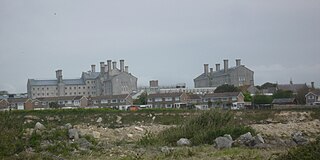 W
WHM Prison Portland is a male Adult/Young Offenders Institution in the village of The Grove on the Isle of Portland, in Dorset, England. It is operated by Her Majesty's Prison Service. The prison was originally opened in 1848 as an adult convict establishment, before becoming a Borstal in 1921, and a YOI in 1988. In 2011 it became an Adult/Young Offenders establishment.
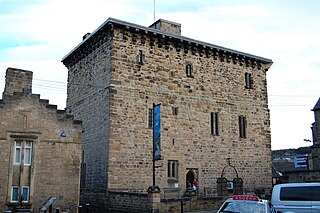 W
WThe Hexham Old Gaol is in the town of Hexham, Northumberland, England. It is reputed to be the oldest purpose-built prison in England.
 W
WHMP Peterhead was a prison in Peterhead in Aberdeenshire, Scotland, operating from 1888-2013. Since June 2016, the former grounds operate as the Peterhead Prison Museum.
 W
WInveraray Jail, in Inveraray, Argyll and Bute, Scotland, is a 19th-century prison and courthouse. In use as a prison from 1820 to 1889, the building is now a living museum. It is a category A listed building.
 W
WJedburgh Castle was a castle at Jedburgh in Scotland. It was fought over during the Wars of Scottish Independence, and was demolished by the Scots commanded by Sir James Douglas of Balvenie in 1409. The site of the original castle was used to build the reform prison based on John Howard system, the construction of which started in 1820.
 W
WLancaster Castle is a medieval castle in Lancaster in the English county of Lancashire. Its early history is unclear, but may have been founded in the 11th century on the site of a Roman fort overlooking a crossing of the River Lune. In 1164, the Honour of Lancaster, including the castle, came under royal control. In 1322 and 1389 the Scots invaded England, progressing as far as Lancaster and damaging the castle. It was not to see military action again until the English Civil War. The castle was first used as a prison in 1196 although this aspect became more important during the English Civil War. The castle buildings are owned by the British sovereign as Duke of Lancaster, which leases part of the structure to Lancashire County Council who operate a Crown Court in part of the building.
 W
WThe Guildhall in Leicester, England, is a timber framed building, with the earliest part dating from c. 1390. The Guildhall once acted as the town hall for the city until the current one was commissioned in 1876. It is located in the old walled city, on a street now known as Guildhall Lane. It was used first as the meeting place for the Guild of Corpus Christi and then later for the more formal Corporation of Leicester. The hall was used for many purposes, including council meetings, feasts, as a courtroom, and for theatrical performances; the ultimatum given to the city during English Civil War was discussed here. It is a Grade I listed building, and the surrounding area, also including the Cathedral of St Martin's, is a conservation area, one of three in Leicester.
 W
WLincoln Castle is a major Norman castle constructed in Lincoln, England, during the late 11th century by William the Conqueror on the site of a pre-existing Roman fortress. The castle is unusual in that it has two mottes. It is one of only two such castles in the country, the other being at Lewes in East Sussex. Lincoln Castle remained in use as a prison and court into modern times and is one of the better preserved castles in England; the Crown Courts continue to this day. It is open to the public most days of the week and possible to walk around the walls from which there are views of the castle complex, cathedral, the city, and surrounding countryside. The castle is now owned by Lincolnshire County Council and is a scheduled monument.
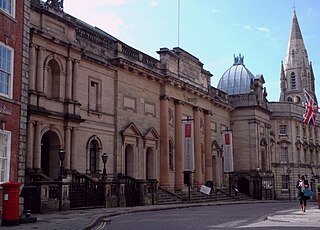 W
WThe National Justice Museum is an independent museum on High Pavement in the Lace Market area of Nottingham, England.
 W
WNorwich Castle is a medieval royal fortification in the city of Norwich, in the English county of Norfolk. It was founded in the aftermath of the Norman conquest of England when William the Conqueror (1066–1087) ordered its construction because he wished to have a fortified place in the town of Norwich. It proved to be one of his two castles in East Anglia, the other being Wisbech. In 1894 the Norwich Museum moved to Norwich Castle and it has been a museum ever since. The museum & art gallery holds significant objects from the region, especially works of art, archaeological finds and natural history specimens.
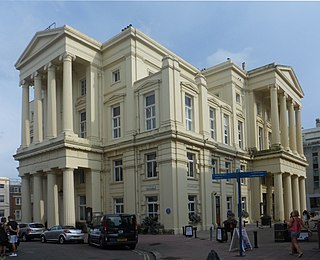 W
WBrighton Town Hall stands on Bartholomew Square in Brighton, East Sussex, England. The town hall contains a number of police cells which were in use until the 1960s, and which now form the Old Police Cells Museum. The town hall is a Grade II listed building.
 W
WOxford Castle is a large, partly ruined Norman medieval castle on the western side of central Oxford in Oxfordshire, England. Most of the original moated, wooden motte and bailey castle was replaced in stone in the late 12th or early 13th century and the castle played an important role in the conflict of the Anarchy. In the 14th century the military value of the castle diminished and the site became used primarily for county administration and as a prison. The surviving rectangular St George's Tower is now believed to pre-date the remainder of the castle and be a watch tower associated with the original Saxon west gate of the city.
 W
WRuthin Gaol is a Pentonville style prison in Ruthin, Denbighshire. Ruthin Gaol ceased to be a prison in 1916 when the prisoners and guards were transferred to Shrewsbury. The County Council bought the buildings in 1926 and used part of them for offices, the county archives, and the town library. During the Second World War the prison buildings were used as a munitions factory, before being handed back to the County Council, when it was the headquarters of the Denbighshire Library Service. In 2004 the Gaol was extensively renovated and reopened as a museum.
 W
WSt George's Hall Is a building on St George's Place, opposite Lime Street railway station in the centre of Liverpool, England. Opened in 1854, it is a Neoclassical building which contains concert halls and law courts, and is recorded in the National Heritage List for England as a designated Grade I listed building. On the east side of the hall, between it and the railway station, is St George's Plateau and on the west side are St John's Gardens. The hall is included in the William Brown Street conservation area.
 W
WSt Neots Museum is a local museum located in St Neots, within the Huntingdonshire District of Cambridgeshire, England.
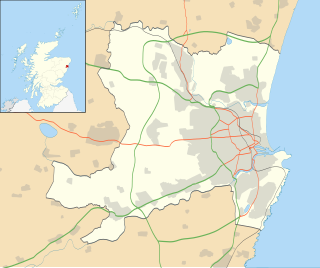 W
WThe Tolbooth in Aberdeen, Scotland is a 17th-century former jail which is now operated as a museum. The Aberdeen City Council took over the former jail and opened it to the public in 1995.
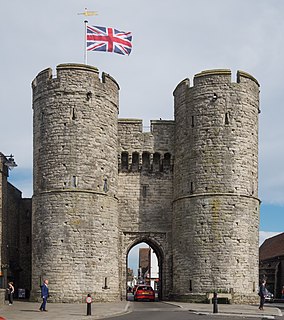 W
WThe Westgate is a medieval gatehouse in Canterbury, Kent, England. This 60-foot (18 m) high western gate of the city wall is the largest surviving city gate in England. Built of Kentish ragstone around 1379, it is the last survivor of Canterbury's seven medieval gates, still well-preserved and one of the city's most distinctive landmarks. The road still passes between its drum towers. This scheduled monument and Grade I listed building houses the West Gate Towers Museum as well as a series of historically themed escape rooms.
 W
WWymondham Bridewell was the local prison or bridewell in Wymondham, Norfolk. The site was in use as a prison from as early as 1619. The present, grade II listed building dates from the 1780s. It closed as a prison in 1878. Since then it has had various uses including police station and courthouse. At present the main part of the building houses the Wymondham Heritage Museum.
 W
WYork Castle Museum is a museum located in York, North Yorkshire, England, on the site of York Castle, which was originally built by William the Conqueror in 1068. The museum itself was founded by John L. Kirk in 1938, and is housed in prison buildings which were built on the site of the castle in the 18th century, the debtors' prison and the female prison.
 W
WYork Debtor's Prison is a former Debtor's prison and Grade I Listed building located in York, North Yorkshire. Since 1952 it has been part of the York Castle Museum.